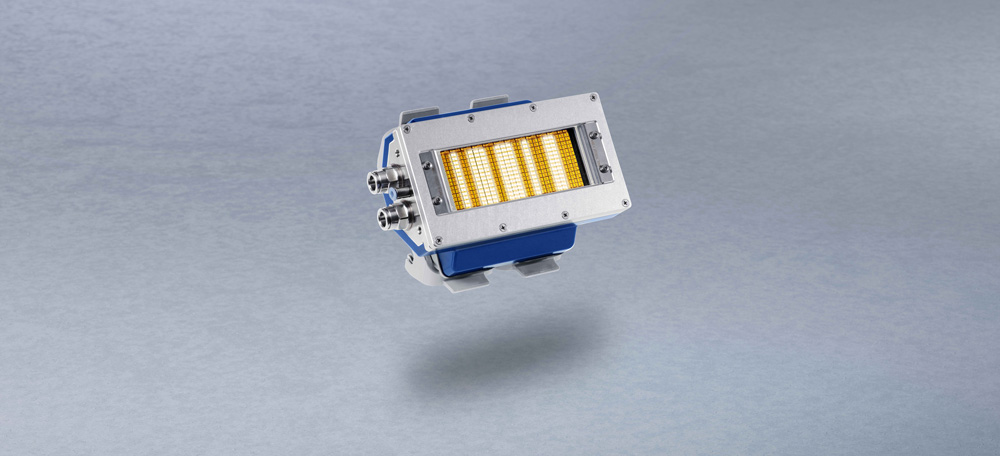News: Optoelectronics
25 March 2022
TRUMPF presents VCSEL heating systems for faster and better flip-chip assembly
In booth 341 (hall A6) at LASER World of Photonics 2022 in Munich, Germany (26-29 April), TRUMPF Photonic Components GmbH of Ulm, Germany (part of the TRUMPF Group) – which manufactures vertical-cavity surface-emitting lasers (VCSELs) and photodiodes for the consumer electronics, datacoms, industrial sensing, heating and automotive markets – is presenting new processes utilizing its VCSEL heating systems for flip-chip assemblies in the electronics industry.

Picture: A VCSEL heating-module (photo: TRUMPF).
By using VCSEL heating systems for laser-assisted bonding (LAB) and laser-assisted soldering (LAS), cycle times are reduced to a ninth compared with standard reflow soldering processes. Furthermore, the quality and reliability of PCB assemblies are increased, since the VCSEL heating systems work with high precision. As the intensity distribution of laser radiation can be adjusted through individual control of single laser zones, the heat is only applied on the PCB and semiconductor die where it is needed. Consequently, the quality and lifetime of the PCB boards as well as the die attach and solder interfaces benefit because warpage and heat within the die are significantly reduced.
The assembly process also benefits from very repeatable and accurate die bonding and soldering conditions, as the VCSEL heating system allows homogenous illumination, fast switching times and precise power control.
Another aspect is the overall footprint for microchip assembly, which can be reduced compared with conventional reflow solutions because the VCSEL heating systems are very compact.
Laser-assisted soldering and laser-assisted bonding
In laser-assisted soldering (LAS), the solder balls are soldered directly on the PCB using VCSEL infrared heat treatment. This is particularly of relevance to supporting the trend towards using smaller solder balls and pitches, which in turn also allows for a reduction in overall space needed in consumer electronics.
In laser-assisted bonding (LAB), a flip-chip is placed on a PCB board using solder balls as a connection. The VCSEL system heats the chip from above, and the laser energy is transmitted through a silicon die to melt the solder balls between the chip and PCB. VCSEL heating systems can be used either for stationary heating or for on-the-fly heating applications. The VCSEL-based systems offer bigger heating areas with higher power compared with other solutions.
In its Customer Application Center in Aachen, Germany, TRUMPF offers customers a testing lab for these potential applications. “With our unique VCSEL heating modules, electronics manufacturing can also benefit,” says Ralph Gudde, VP marketing & sales at TRUMPF Photonic Components. “The compact design and its homogeneous heating patterns lead to better process control and higher product quality. At the same time, it reduces the footprint of the assembly production line – in the case of LAB of up to 30%.”
TRUMPF VCSEL heating system accelerates sustainable Li-battery production








